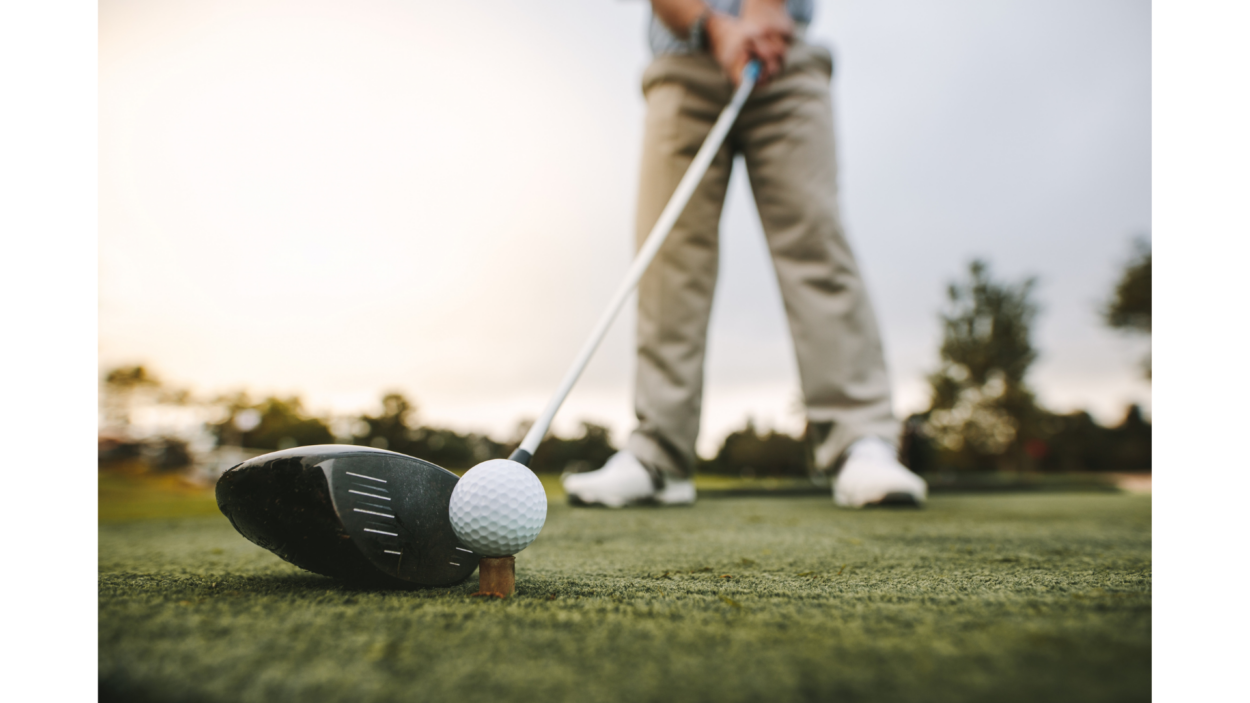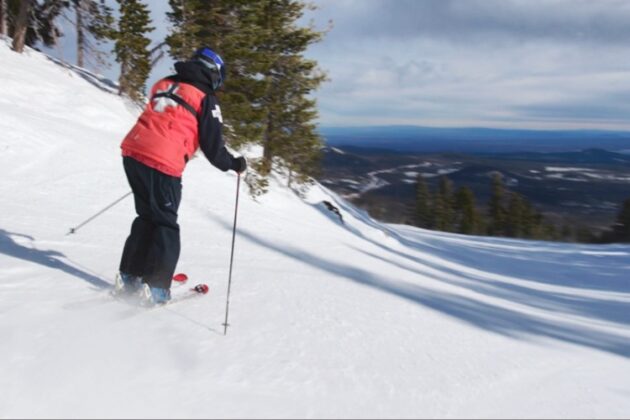
Golf is an ideal sport, keeping you active while spending time outdoors with friends or family. This game, often perceived as low-risk in terms of injuries, demands a high level of skill and physical coordination. Despite its seemingly gentle nature, golf can lead to various injuries, whether you’re a professional or a casual player. Swinging a club involves a complex series of motions and utilizes many parts of the body. The following are some of the most common golf injuries our doctors see here at The Center.
Knee Injuries from Golfing
The knee is one of the most commonly injured areas in golfers. A golf swing is one of the more violent ballistic activities, and it places a high rotational stress on the knee. According to Dr. Timothy Bollom, the force on your lead leg during a golf swing is between 4 ½ to 5 times your body weight – and it all happens in less than a quarter of a second. “It would be less stress overall on the knee to jog 18 holes than to play 18 holes,” says Dr. Bollom.
Meniscus Tear: A torn meniscus is one of the most common injuries our doctors see in golf players. The meniscus is a piece of cartilage that acts as a shock absorber between your thighbone and shinbone, and a tear can be the result of direct contact or twisting the knee. Symptoms of a torn meniscus include unremitting sharp pain, increased pain with twisting, stiffness and swelling, and a limited range of motion.
Arthritis: Arthritis is another common knee condition that golfers experience. The knees bear the weight of the body, so over time the cartilage in the knee wears down and stops protecting the ends of the bones in the joint. Symptoms include pain, swelling, stiffness, and trouble bending or straightening the knee.
Shoulder Injuries from Golfing
The shoulder joint is extremely complex and has more muscles and ligaments attached than any other joint. Because of this, they are also one of the most common joints to injure – especially when you’re practicing your golf swing.
Rotator cuff injuries: These are a common cause of shoulder pain for golfers. The rotator cuff is a group of tendons that contribute to the stability of the shoulder. Symptoms of injury can include constant shoulder pain, pain or weakness when lifting or lowering your arm, limited range of motion, or clicking/popping. Injuries to the rotator cuff can vary, including tears and tendonitis. A tear is when one or more of the tendons that make up the rotator cuff is torn and the tendon is no longer fully attached to the humerus bone. Tendonitis occurs when the rotator cuff tendons become compressed against the shoulder blade and often occurs in athletes who perform repetitive overhead movements.
Shoulder impingement: This is another common another injury golfers can suffer from, characterized by the rotator cuff tendons being squeezed during arm movements. This can lead to inflammation and swelling, causing pain and restricted movement. Maintaining proper posture and shoulder mechanics during the swing can help mitigate these risks.
Elbow Injuries from Golfing
Elbow injuries: Elbow injuries are prevalent among golfers due to the repetitive nature of the golf swing, which can strain the muscles and tendons in the elbow. Lateral epicondylitis, also known as tennis elbow, is a painful condition of the elbow caused by overuse and is common in golfers, as well as tennis players. This condition occurs when the tendons that join your forearm muscles to the bones become inflamed. As the muscles and tendons are overused from repeating the same motions over and over in your golf swing, they start to become damaged, resulting in pain and tenderness on the outside of the elbow.
Medial epicondylitis: Also known as golfer’s elbow, is another common elbow injury, but the inflammation occurs at the tendons that attach your forearm muscles to the inside of the bone at your elbow. Symptoms include weakness in hands and wrists, numbness or tingling from the elbow to the fingers, and elbow stiffness.
Lower Back Injuries from Golfing
Over 80% of people experience at least one episode of back pain at some point in their life. Since golfers spend several hours playing a round of golf in a bent-over position with a repetitive swinging motion, it’s no surprise that many experience back pain.
The spine is made up of small bones, called vertebrae, which stack up on each other with sponge-like, jelly-filled discs between the bones, along with muscles, ligaments, and nerves. Herniated discs can occur in the lower back when making pulling, bending, or twisting movements such as during the golf swing. Symptoms vary, but they can include back pain, numbness or tingling, and weakness. They can sometimes cause radiating pain to the buttocks, legs, and feet.
Vertebral compression fractures are another common back injury, occurring in nearly 700,000 patients each year. These fractures are typically linked to osteoporosis and most commonly occur in the lower back. Pain often gets worse when sitting or standing for a long period of time, which is common on the golf course.
Preventing Golf Injuries
Preventing injuries is essential for maintaining your enjoyment of the game. Our orthopedic sports medicine doctors recommend making a few adjustments to avoid injuries while still enjoying the game:
- Warm up before you play: Make sure your muscles are engaged before you start swinging.
- Rotate your lead leg: To avoid knee injuries, rotate your lead leg 10-20 degrees out.
- Wear appropriate footwear: Wear soft spikes or no spikes to reduce stress on your knees and lower back.
- Get professional help: Ask a golf professional to evaluate your swing and grip to look for poor mechanics that could lead to injury.
- Develop muscle strength and flexibility: A physical therapist can recommend simple exercises and golf-specific stretches to prevent injuries.
Treatment Options for Golf Injuries
Golf should be enjoyable, not painful! The good news is many of these conditions can be treated non-surgically. When you notice pain during or after your golf game, begin with the RICE protocol, which includes rest, ice, elevation, and compression. This helps relieve pain and swelling. If you are still experiencing symptoms, make an appointment with an orthopedic surgeon or neurosurgeon to help you diagnose, manage, and treat your pain. Many patients find pain relief from other conservative treatment methods including steroid injections, physical therapy, and bracing.
- RICE Protocol: Rest, ice, compression, and elevation can help reduce pain and swelling in the initial stages of injury.
- Steroid Injections: These can provide temporary relief for inflammation and pain.
- Physical Therapy: Tailored exercises can help strengthen muscles and improve flexibility, aiding in recovery and preventing future injuries.
- Bracing: Supports can stabilize affected joints and reduce strain during recovery.
When surgery is necessary, your team of experts at The Center will work with you to develop a recovery solution to get you back to doing what you love. Surgery may involve repairing torn tendons, removing damaged tissue, or other procedures to restore function and alleviate pain.
Tips for Avoiding Hand Pain
Hand and upper extremity specialist, Dr. Chris Healy, offers a few tips on how to avoid hand pain when gripping a golf club:
- Proper Grip: Ensure you are using the correct grip pressure. Too tight a grip can strain the muscles and tendons in your hands.
- Grip Size: Make sure your golf club grips are the right size for your hands to avoid excessive strain.
- Rest and Recovery: Give your hands adequate rest between games and practice sessions to prevent overuse injuries.
Stay informed about upcoming webinars and events, and gain valuable insights on leading a healthy, pain-free life from our experts by subscribing to our monthly newsletter. Click the button below to join!





